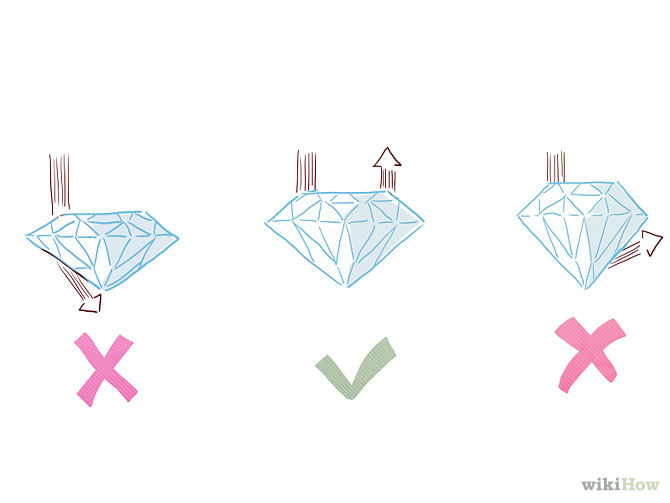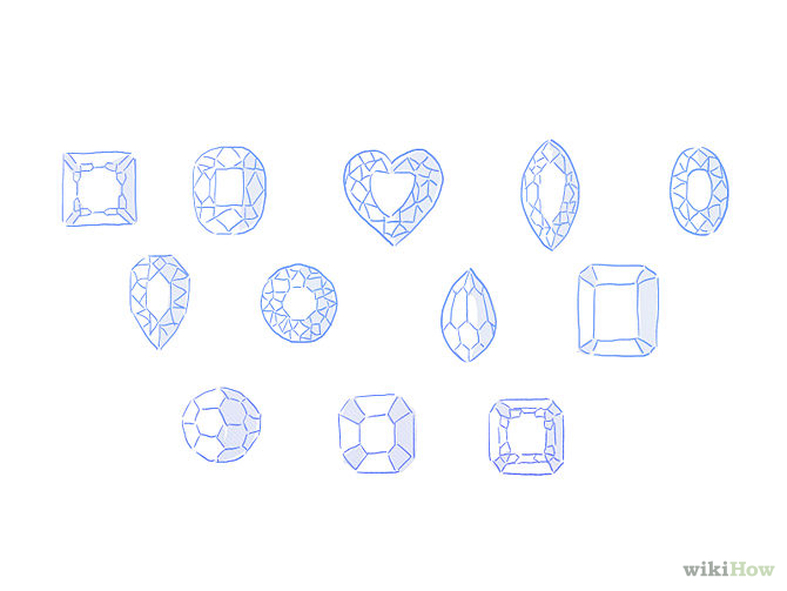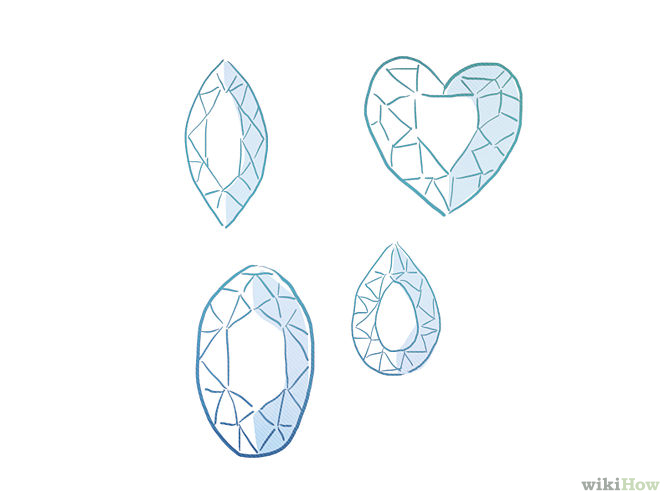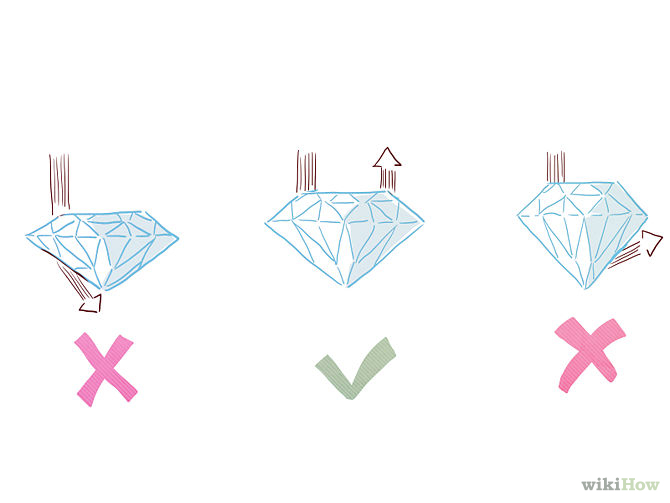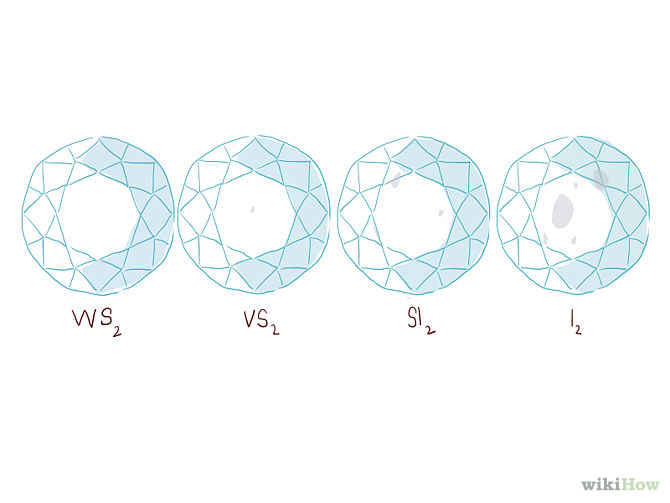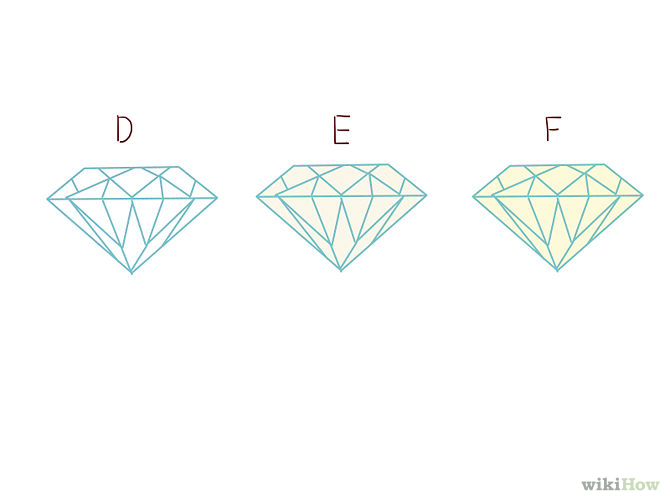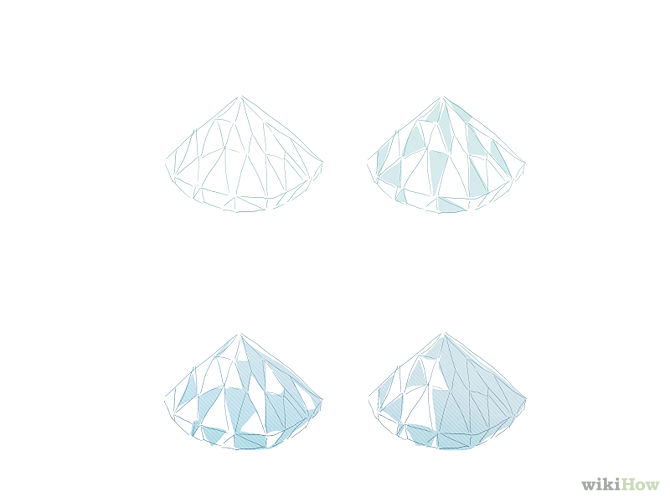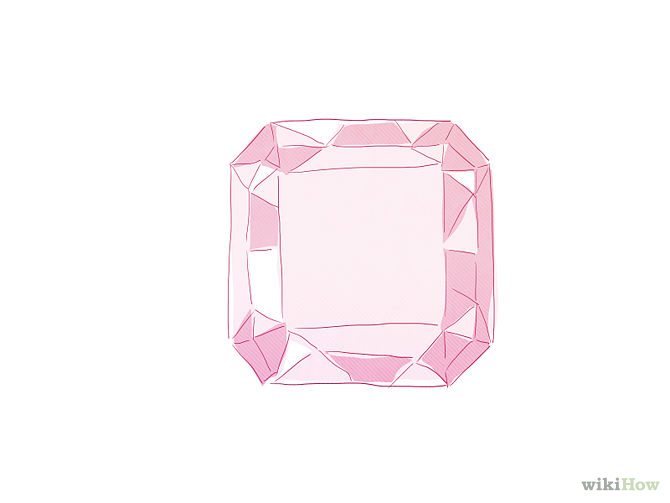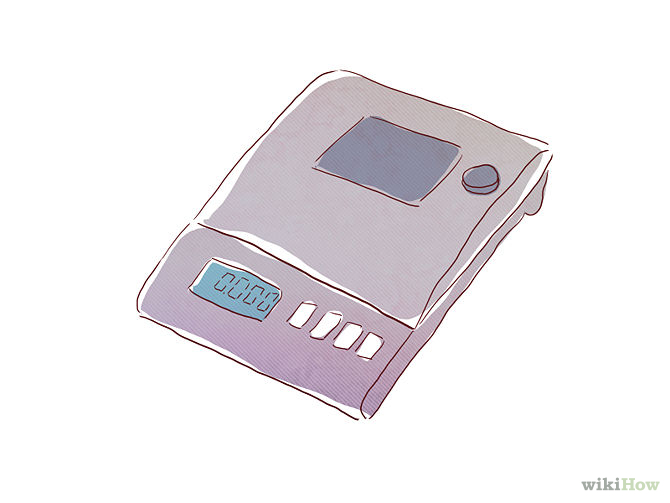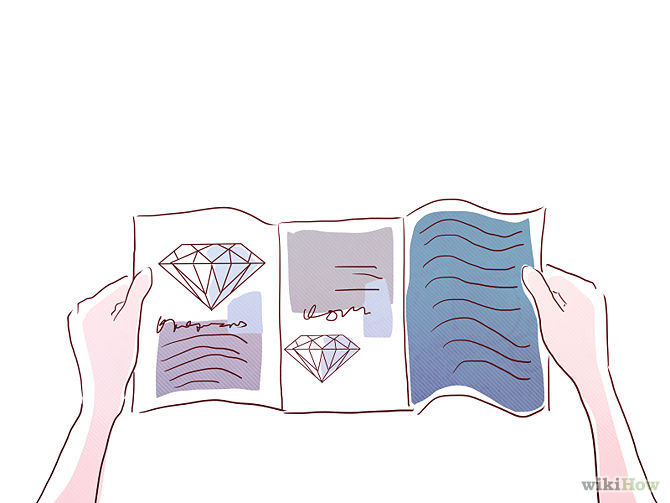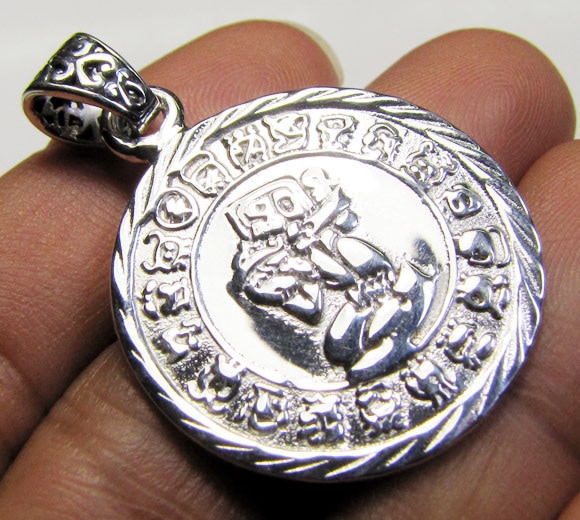|
A diamond's quality and price are determined by a set of four conditions known as the four C's: cut, clarity, color, and carat. When selecting a diamond, look for one that balances these four qualities without straining your budget. Perfect quality diamonds are rare and extremely expensive, but you can select a slightly less perfect diamond that still appears brilliant to the naked eye. Method 1 of 5: CutThe cut determines a diamond's shape and brilliance. A well-cut diamond reflects light from one facet to another. If cut too deep or too shallow, light escapes from the diamond prematurely, reducing the stone's quality. Pick out the right shape.While cut refers more to quality and level of brilliance, the shape is one aspect of the cut. Review the possible shapes available on the market, and choose the one you like best. If buying a diamond for someone else, ask his/her opinion before selecting a shape.
Select a popular, classic shape if you have no one to ask. The most popular shapes are round brilliant, princess, and emerald. Consider a non-traditional shape if the receiver has a non-traditional personality. Less common shapes that are still fairly popular include marquise, oval, pear, and heart. Choose the highest quality of cut you can afford.A diamond's cut determines the vast majority of its brilliance, and many consider the cut to be the most important factor when choosing a diamond.
Select and "Ideal Cut" diamond for the highest level of perfection. Choose a "Very Good" or "Excellent" grade diamond for a slightly less expensive yet high quality stone. Consider a "Good" grade if you want to balance the other C's and still stick to a budget. Never purchase a fair to poor quality diamond, especially for engagement rings and other gifts. Diamonds at these levels severely lack brilliance. Method 2 of 5: ClarityClarity refers to the purity of a diamond. Most diamonds have some surface blemishes known as "inclusions," but extremely high quality stones have no visible marks and are considered flawless. Ask the jeweler about the clarity of any diamond you consider purchasing. A reputable jeweler will be honest about a stone's grade and will answer any questions about what that grade means. Purchase a stone without visible imperfections. Many imperfections are not visible to the naked eye, however, and can only be seen by using a 10-power magnification glass.
Method 3 of 5: ColorThe highest quality diamonds are colorless, since colorless stones are rare and reflect light better than tinted diamonds. Most diamonds have slight tints of yellow, which are often impossible to see with the naked eye. Purchase a diamond that balances colorlessness with price. Since most tints are extremely difficult to see, a higher grade for color does not make much difference in quality. It can, however, make a huge difference in price.
Look at E (ice white) or f (fine white) diamonds if you cannot afford a D grade diamond but still want a stone that is colorless to any eye. Ask to see G (white), H (top commercial white), or I (commercial white) that are near colorless. These diamonds appear colorless in a face up position, but do display a faint yellow tint when viewed against a perfectly white background. The tint is nearly impossible to see once mounted against a metal setting, however, especially if the setting is gold. Consider J (top silver), K (top silver), L (silver cape), or M (light cape) colors for stones that are still relatively colorless set against a yellow metal, but more obviously tinted when matched with a white metal like platinum. Ask the jeweler about a diamond's fluorescence. Fluorescence appears when a diamond is exposed to ultraviolet light, but usually has no effect on a diamond in regular light conditions. On rare occasions, strong fluorescence can alter the appearance of a diamond's color, sometimes causing it to look milky or oily.
If you have the budget, consider purchasing a "fancy" diamond, which is a type of rare stone with an especially deep hue. Red and pink fancy diamonds are rare, beautiful, and expensive. Here you can see the price per carat growth in last 20 years. The rare diamonds are good longterm investment. Method 4 of 5: CaratThe weight, or size, of the diamond is measured in carats. The more carats a diamond has, the more expensive it will be. Take carat weight into consideration last. This does not affect the quality of the stone in any way, so a heavier weight does not necessarily indicate a higher quality stone. Consider selecting a popular size carat. The most common sizes for engagement rings are 1/2 carat, 1 carat, and 2 carat. If buying an engagement ring or other gift, find out what the recipient prefers in size. Not all women prefer many carats. Some may place quality over size, while others may be willing to sacrifice a bit of quality for a more noticeable diamond with more carats.
Consider the size of the wearer's hand if buying a diamond ring. Women with more petite hands may prefer the look of a smaller stone to larger stones that have a tendency to overwhelm. Article source: WikiHow Method 5 of 5: Ask certificateHere in Matis Jewelry factory you will get a quality certificate for every item purchased. NOW IT'S TIME TO FIND A BEST DIAMOND FOR YOU!
|
|

